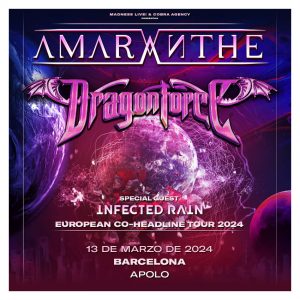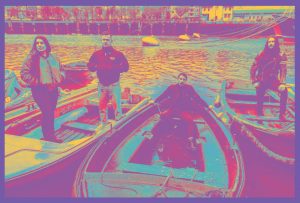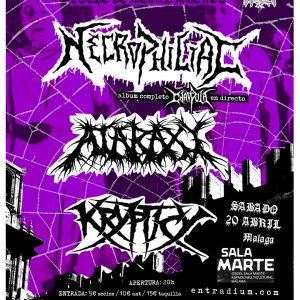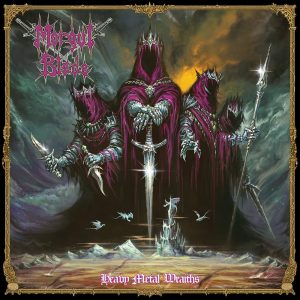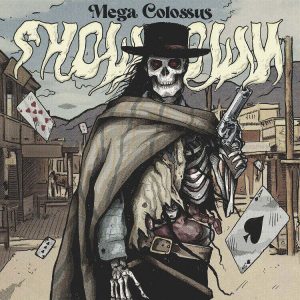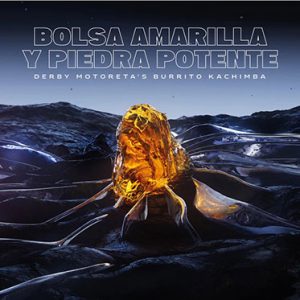Ester Segarra (EN)

– Hello Ester, first of all thank you so much for answering our questions. I won’t go for an in-depth introduction of yourself but to begin with, you were raised in Barcelona during Spain’s transition. Convulse times. How does this shape your personality and maybe spark your interest in art? What motivated you to go to London and how were those first years there when you were trying to make your own place in the world of photography?
Growing up in Spain in the 80’s and having artistic interests was not a good match. The mindset of the time was to be practical, think of stability and security. It was also during the time of the cold war and the nuclear war threat so it was an atmosphere of fear and uncertainty. It was also the time of Metallica, Anthrax, Slayer… and thrash metal. Now that I think about it… you could say those were interesting times. Since I was a kid I had been fascinated by paintings, movies, music and all sorts of art and despite the circumstances I stayed in that path. Art is the portal to a beyond reality place where the impossible is possible. I guess, growing up at that time gave me some practical foundations that has helped me to do my work.
At first, I went to London to leave a very toxic situation in Barcelona behind. It was meant to be for a short while, and use the opportunity to work to pay for my photography studies and learn English. But when I was close to achieve my goal, all my money got stolen so it left me with the hard decision whether to stay or go back empty handed. I stayed and I enrolled to continue studying photography. I was working 6 days a week and going to college 2, which meant that Saturdays I was doing a double shift: college in the morning, work in the evening. It was hard. I lived on very little money and I would use any time I had to do photography. I started taking pics of friends in bands and saying yes to any job that came my way. I was constantly looking for opportunities and I faced a lot of rejection. My motto was, never give up. If the door has to close it won’t be me who closes it, not before I even started.
– We can read on your website when was your interest for photography born but, when did you find out photgraphy and music could go hand in hand?
As a music fan I was well aware of the role of photography in music but I never thought that was something that I could do or that was within my reach. It was not until I was in London when I started to seriously contemplate photography as a career and I started taking pics of friends playing that both came together. I was serious about photography, I revered music so picturing musicians had a purpose and I loved it.

– Unfortunately all women in art have to struggle with being first seen as a woman and then as an artist. Do you think being a woman you have to work harder as a man to be seen for what you do and to earn respect?
I think that happens everywhere. It is not just that in art you are first being seen as a woman, but in everything you do. I have always refused to consider myself at disadvantage for being a woman. I think it is outstanding what you are able to do as a woman. If anyone has a problem with me being a woman is their problem not mine. And I think basic respect to another being should be given as a right, it is admiration that should be earnt. It is unfortunate that respect is such a rare value, to own self and to others.
– Speaking of such, what female artists (in any discipline) have inspired you? Not just their body of work, but something in them; their attitude, their pressence, their way of facing the world…
My first vivid memory of learning about the struggles that women has faced throughout history to be recognised was when I was introduced to the work of Víctor Català (real name Catarina Albert). A well recognised catalan author who was actually a woman. She took on a man’s name to make sure she would be heard! We have come a long way from that… but still, are women’s individual voices being heard as much as men’s as a norm or is it rare exceptions? Virginia Woolf kept her name and she was pioneer of the use of stream consciousness in narrative. I have always been inspired by women who are unafraid to be loud, rock the boat and give the middle finger like Madonna, Lady Gaga, Doro, Wendy O Williams or those who stand equally strong but with a different energy like PJ Harvey and Lisa Gerrard. As a photographer my reference is Annie Leibovitz, a woman succeeding in a world of men. And the goddess Kali as an endless source of wisdom.

– You have worked with artists that take their art very seriously and leave nothing to chance. Is this a challenge? Or do you considere a bigger challenge having more freedom to try capture their music? How do you do so?
When working with artists you are combining your own creative energy with theirs. If both energies are in tune they fire each other up. If they are not in tune, one will diminish the other. The challenge is knowing whether you are in tune and what to do when you are not. The more defined the energies are the more clear it is to see it.
– Skulls, snakes, pentagrams… Symbols are often present in your work. Are they tools of power in your work or an aesthetic resource? Is it necessary for you that the person making use of those symbols are aware and coherent?
I love symbolism but when symbols are used devoid of meaning they become cliches, which I despise. Therefore it is important to me that when using those elements are being used fully conscious and aware of the meaning. Symbols invoke energies and when doing so should be done with care. It is also an attitude of respect. Powerful symbols are those that not only operate in an energetic level but also in an aesthetic, visceral level. And for me it is the realm of true art.
– Fire is another symbol that plays an important role in your photography, even tough death is pretty much ubiquitous. What is Fire and what is Death?
Fire is creation and destruction. Death is transformation, the dawn of rebirth. Both are the enemies of stagnation.
– This brings to my mind an interview I read with Genesis P-Orridge some years ago where they stated «…And that the artist is the inheritor of a tradition of wise people—shaman, and priests, the ritual side of the social animal, there to expiate psychic and philosophical problems. That’s what art is meant to be about, is rescuing people from the fear of death and the fear of life, and that’s a very thin line», which I think resonates with the way you approach your work. What do you think? How much of that instinctive, primordial wisdom is there in art? How much of a ritualistic process is it?
I completely agree with Genesis P-Orridge’s view on art. It is by journeying into the unconscious that we find the path to wisdom and it is within a ritualistic approach that you do it consciously. Art allows you to express that.

– Even though you have photographed musicians in different styles, and not only musicians, Black Metal is the core of what you do. Is BM your «home»? How did you find it?
It was in my second assignment for Terrorizer shooting a show at the Underworld, London that I came across black metal for the first time. It was Ancient Ceremony, Behemoth and a bunch of other bands playing. I walked in and the experience: so dark, so evil, so inhuman, so deadly. It was like nothing else I had felt before. I thought… I found home.
– Now let’s talk about your book «Ars Umbra». The Art of the Shadows. Is this what you do? Feels like an allegory.
Umbra refers to the darkness of the music featured in the book and the concept of shadow in both human and photographic terms. I cast shadows using light on the subject as well as the scene where I take the pics. It is deciding what remains in the shadow and what comes out into the light that lies at the core of what I do. It is the Art of Shadow.
– I read the book was brewed in Sweden and that it was motivated after a tough experience with ayahusca. So first of all, why Sweden? And how much of instropection has this book been preceeded by? Does it represent the end and the beginning of something?
I had been visiting Sweden many times for work and socialising before and that made me curious about spending some time there. I found an old interview from three years before stating my wish to live in Sweden and do a book. I never thought at the time that one day both things will happen together. As I set my intention to start on the book, a good friend offered me a great chance to spend sometime in Gothenburg, so I went there for 6 months and that gave me the space I needed to start the process of the book. It was a long process, it meant going back to 15 years of photographs and I like to dig deep, so it required a long time to look within and find answers. It was a mean to celebrate an era that I could feel it was coming to an end. To present the images that tell the story of that era in the way I thought they deserved. A photographic memoir. Every end precedes a beginning.
– The only part of the book with some live photos is «In Memoriam», a quite emotionally charged part of the book I’d dare say. Is there any picture that holds a special meaning for you? And what bands, personalities, individuals pictured in «Ars Umbra» have had a bigger impact on you? In any way.
It was a very difficult section to put together, I immersed myself in the images I have of those no longer with us until was no longer healthy and I was then able to start the process of selecting the images. All the musicians, lyrics and the images have a very special meaning, they have impacted me on way or another. But I would say that because of my friendship, the images of Selim Lemouchi are the most hard hitting. Specially, the one taken at sunset in Uppsala on the last evening I saw him alive. His sister, Farida Lemouchi, is one of the most inspiring women I had the pleasure to know and with a voice to die for. When I grow up I wanna be like her!
– The book comes with a BSO composed by Uno Bruniusson. Is it meant to alter the experience or to compliment it? Are they indivisible units?
You can experience them both separately, I love meditating to the soundtrack. But the aim of including a soundtrack was to really add music to the experience of going through the book, so that it would alter that experience, as music does whenever you listen to it.
– It’s a percussion BSO. Does this hold a certain significance? Percussion instruments are the most ancestral, and are powerful tools for spiritual/ritualistic purposes.
Yes, that’s right. I chose a percussion based BSO precisely because of their ancestral, primal roots. It was inspired by a Macumba ritual I attended in Brazil where drums were used exclusively for ritualistic purposes with great power. Beyond what I had ever witnessed before or ever since. I wanted the soundtrack to take you back to the very beginning of music, the end becoming the beginning. An Ouroboros .

– Is your photography an art or a language? I personally feel like you have internalized the symbols to develop your own language/system through art, as you seem to first create to then capture it.
That is a very interesting consideration. I have indeed developed a language and my own way of telling stories through art. Creating things first allows to bring in an energy that will unfold as the shoot develops, trying to fully capture it is challenging as well as magical. Specially if the bands have a strong inner fire, you can bring the flames higher and higher. It becomes a dance between fires, light and shadow, the music and the musician, immortality and death.
– And before we wrap this interview up, in what point of your career are you and what is the next step? Where is all this leading you to?
Right now my work is been deeply affected by COVID-19 like everyone else who is involved in music. I am using the time to go deep within and reflect upon many of the challenges I have faced in the last few years and lessons learnt. Setting the wheels in motion for necessary changes to take place and find new fuel for the fire. I feel I have nothing left to say. I have gone far into the dark and I stared into the void and I want to see what lies beyond.
– That’s all from our side, thank you again for taking your time. If you’d like to add any final words, something you’d like to stress or something we forgot to mention, feel free to do it.
I’d like to thank every single person, including yourself, who has one way or another supported this project and for the overwhelming response it has received. Thank you so much!! I am humbled.
